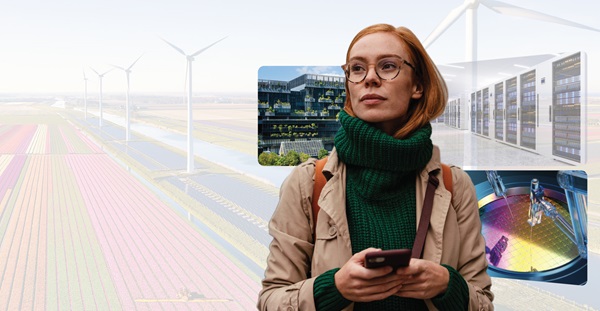In recent months, a trend has emerged: more organizations are pulling back from net zero commitments—citing cost, complexity, and a lack of short-term returns. The reasons are clear: achieving net zero is hard, expensive, and demands bold action and investment that many organizations find daunting. Gone are the days when sustainability promised quick paybacks and easy wins. Today, achieving meaningful decarbonization requires a long-term mindset, deep innovation, and cross-functional commitment.
But delay is not a strategy. The challenge is undeniable—but it is far from insurmountable. Organizations that embrace this challenge and begin the work now will be ahead of the curve tomorrow, and in some cases even today. Decarbonization can identify new opportunities for innovation, mitigate risk at both the asset and portfolio level, and create access to new or lower-cost sources of funding.
Collaboration across industries, between technology providers and companies focused on delivering sustainable projects, is key to driving meaningful progress.
Arcadis and Autodesk are partnering to tackle this challenge head-on. As trusted partners in the built environment, we combine our tools, expertise, and strategies to help organizations embed decarbonization into their operations and accelerate their journey toward decarbonization.
Collaborative Opportunities for Net Zero Acceleration
The path to decarbonization requires more than incremental progress; it demands acceleration. By leveraging partnerships, organizations can scale their impact and drive measurable results. Here we consider some of the opportunities in front of us, as well as industry best practice examples that can help scale decarbonization in the built environment today.
-
1. Use Energy/Area Targets as a Carbon Proxy
Setting targets for energy use per square foot (or meter) is a simple but powerful way to track and reduce carbon emissions.
Autodesk enables early-stage energy-use modeling with tools like Insight in Revit—helping architects optimize performance before construction begins.
Arcadis works with clients to set and implement Energy Use Intensity (EUI) targets, often as part of city-scale or portfolio-wide decarbonization roadmaps.
Industry Example: Microsoft’s Energy Efficiency Goals1
Microsoft has set aggressive energy efficiency goals for its buildings and campuses as part of its commitment to being carbon negative by 2030. Microsoft uses energy use intensity (EUI) metrics to benchmark and optimize energy consumption per square foot across its facilities. The company deploys advanced energy monitoring systems and AI-driven analytics to improve efficiency, reduce waste, and lower carbon emissions.
-
2. Embedding Sustainability Goals in Business Functions
Integrating sustainability across an organization—from supply chain to finance—ensures long-term resilience and accountability.
Arcadis embeds carbon KPIs in delivery models, leadership incentives, and client engagements, ensuring sustainability is baked into every layer of decision-making.
Autodesk supports functional integration through its Carbon Fund, which funds internal training, cross-functional decarbonization programs, and product innovation tied to environmental performance.
Industry Example: Unilever’s Sustainable Living Plan
Unilever embedded sustainability goals into core business functions through its Sustainable Living Plan. This plan integrates carbon reduction targets into supply chain operations, product design, and marketing strategies. By aligning its sustainability goals with operational priorities, Unilever has reduced emissions across its value chain and is now targeting net zero by 2039.
-
3. Bundling Projects for Efficiency
Coordinating initiatives into comprehensive packages, rather than as standalone projects, can reduce costs and amplify impact.
Autodesk’s Carbon Fund consolidates climate-related investments, including renewable energy procurement and carbon market innovation.
Arcadis uses programmatic bundling with clients by grouping similar low-carbon initiatives into comprehensive packages (e.g., energy audits + retrofit upgrades + procurement policy shifts), increasing ROI and delivery speed when pursuing net zero.
Industry Example: Nestlé’s Net Zero Roadmap
Nestlé has bundled multiple sustainability initiatives under its Net Zero Roadmap, aiming to achieve net zero emissions across its value chain by 2050. The company combines projects such as transitioning to renewable energy, reducing packaging waste, and collaborating with farmers to adopt regenerative agriculture practices. By bundling these efforts, Nestlé maximizes efficiency and impact while also accelerating its pursuit of net zero emissions.
-
4. Extending ROI Timeframes
Decarbonization often requires investments that pay off over decades—not quarters.
Arcadis encourages clients to evaluate ROI through a climate risk lens, helping shift decision-making from near-term payback to long-term resilience, risk mitigation, and value creation.
Autodesk’s Carbon Fund includes long-horizon investments like its 15-year VPPA solar deal projected to eliminate 2.1 million metric tons of emissions—prioritizing transformative, not transactional, returns.
Industry Example: Ørsted’s Renewable Energy Investments
Ørsted, a global leader in renewable energy, has embraced long-term ROI horizons for its wind and solar energy projects. The company shifted from fossil fuels to renewables, committing billions of dollars to offshore wind despite lengthy payback periods. Ørsted’s strategy demonstrates how extending ROI timeframes can enable transformative investment in decarbonization.
-
5. Collaborating to Scale Results
Climate impact multiplies when organizations work beyond their own walls. Collaboration across industries, supply chains, and customers can accelerate decarbonization far beyond what any one entity could achieve alone.
Autodesk supports industry-wide progress by equipping partners and customers with tools, training, and funding that enable smarter, lower-carbon decisions. Through programs like the Technology Impact Program, Autodesk provides free software to nonprofits and startups advancing climate innovation.
Arcadis collaborates with clients, governments, and partners globally to scale sustainability solutions—from national resilience frameworks to city-level decarbonization plans. Its Global Excellence Centers also drive shared learning and scalable delivery.
Industry Example: Apple’s Supplier Clean Energy Program
Apple partners with its global suppliers to accelerate renewable energy adoption—providing guidance, tools, and funding to help them transition to 100% clean power. The program has significantly reduced supply chain emissions and supports Apple’s goal to be carbon neutral by 2030.
The Road Ahead to Decarbonization
While the journey to decarbonization is challenging, it is achievable as more organizations embed and accelerate progress across their industries. Companies that commit to embedding sustainable practices now, even when difficult, will find themselves ahead of the curve tomorrow.
Arcadis and Autodesk are partnering to tackle this challenge head-on. As trusted partners in the built environment, we combine our tools, expertise, and strategies to help organizations embed robust decarbonization processes into their operations and accelerate their journey toward decarbonization.
This article was written by Kat Mitchell, Impact Growth & Customer Engagement Manager at Autodesk and Kealy Herman, Global Technical Director for Net Zero Strategy at Arcadis. Learn more about Autodesk sustainability here. Learn more about Arcadis and our Sustainability Advisory solutions here.






